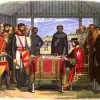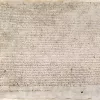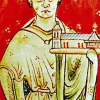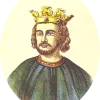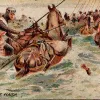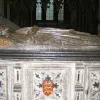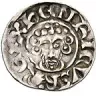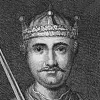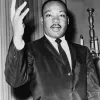Important update from TheSchoolRun
For the past 13 years, TheSchoolRun has been run by a small team of mums working from home, dedicated to providing quality educational resources to primary school parents. Unfortunately, rising supplier costs and falling revenue have made it impossible for us to continue operating, and we’ve had to make the difficult decision to close. The good news: We’ve arranged for another educational provider to take over many of our resources. These will be hosted on a new portal, where the content will be updated and expanded to support your child’s learning.
What this means for subscribers:
- Your subscription is still active, and for now, you can keep using the website as normal — just log in with your usual details to access all our articles and resources*.
- In a few months, all resources will move to the new portal. You’ll continue to have access there until your subscription ends. We’ll send you full details nearer the time.
- As a thank you for your support, we’ll also be sending you 16 primary school eBooks (worth £108.84) to download and keep.
A few changes to be aware of:
- The Learning Journey weekly email has ended, but your child’s plan will still be updated on your dashboard each Monday. Just log in to see the recommended worksheets.
- The 11+ weekly emails have now ended. We sent you all the remaining emails in the series at the end of March — please check your inbox (and spam folder) if you haven’t seen them. You can also follow the full programme here: 11+ Learning Journey.
If you have any questions, please contact us at [email protected]. Thank you for being part of our journey it’s been a privilege to support your family’s learning.
*If you need to reset your password, it will still work as usual. Please check your spam folder if the reset email doesn’t appear in your inbox.
The Magna Carta
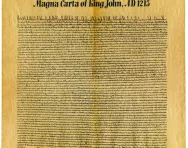
What is the Magna Carta?
The Magna Carta is an important medieval document that limited the right of the king to do as he wished without regard to the law. It is world-famous as a symbol of justice, fairness, and human rights.
Magna Carta means ‘big charter’ in Latin (a charter is a legal document which guarantees certain rights). When it was signed in 1215 it was intended to protect the barons and a limited class of free men from the worst excesses of the king by regulating feudal customs and rights and setting out rules relating to the administration of justice.
The Magna Carta is often seen as the basis of rights to equal and fair treatment under the law for all citizens.
Top 10 facts
- King Richard I ‘Richard the Lionheart', brother of King John, died in 1199. Under Richard's rule England was involved in a series of expensive wars.
- King John inherited his brother's wars and needed money to continue to fight so he put pressure on his barons to raise the necessary finance. He increased taxes, confiscated land and levied heavy fines.
- The barons were angered by what they saw as King John’s misuse of feudal customs and rights.
- The barons rebelled and on 17 May 1215 they captured London. King John was forced to meet with them at Runnymede in June 1215.
- The Archbishop of Canterbury, Stephen Langton, played an important role in negotiations between the king and the barons. The Magna Carta contains many references to the rights of the church.
- The text of the Magna Carta was written by scribes in Medieval Latin. They wrote on parchment; this was very expensive and so they used small writing and abbreviations in order not to waste any space.
- King John did not sign the Magna Carta. It was authenticated by the Great Seal. It is possible that King John could not write!
- Many copies of the Magna Carta were made and sent out to important officials such as sheriffs and bishops. Only four copies currently exist; two are in the British Library, one in Lincoln Castle and one in Salisbury Cathedral.
- The Magna Carta originally had sixty-three clauses of which only three remain in law today.
- The most famous clause of the Magna Carta is interpreted as guaranteeing individuals the right to a free and fair trial under the law. This means that the law provides protection from punishments such as imprisonment, seizure of property or exile without a trial.
Timeline
- 27 May 1199Coronation of King John

- 24 March 1208Pope Innocent III enforces papal interdict
- 1 June 1213Stephen Langton becomes Archbishop. Papal interdict lifted
- 17 May 1215Rebel barons take the Tower of London

- 10 June 1215Start of Runnymede meeting between barons and the king
- 15 June 1215Magna Carta granted

- 24 August 1215Pope declares Magna Carta illegal
- 18 October 1216Death of King John. Henry III becomes king
- 12 November 1217William Marshal, regent for Henry III, issues first revision of Magna Carta
- 6 November 1217Second revision of Magna Carta
- 11 February 1225Henry III issues revised Magna Carta
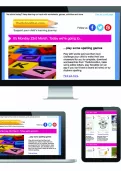
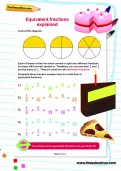
Boost Your Child's Learning Today!
- Start your child on a tailored learning programme
- Get weekly English & maths resources sent direct to your inbox
- Keep your child's learning on track
Did you know?
- The 800th anniversary of the signing of the Magna Carta was on 15 June 2015.
- Parchment was made from sheep skin which was soaked in lime before being stretched out to dry and scraped with a knife to make a smooth writing surface.
- King John supposedly died as a result of dysentery caused by over eating.
- King John is famous for having lost the Crown Jewels in the Wash (a Lincolnshire estuary).
- The Magna Carta was amended and reissued in 1216, 1217 and 1225.
Look through the gallery and see if you can spot the following:
- King John signing the Magna Carta
- The Magna Carta
- An image of King John
- The Crown Jewels are lost in the Wash
- Tomb of King John
- A penny depicting King John
Gallery
About
The feudal system is the name given to the structure of power, rights and obligations in medieval society. Under the feudal system the king owned the land which he granted to the barons as his tenants in chief. This made the barons and bishops second only to the king as powers in the land. In return for their often very substantial land holdings the barons owed their loyalty to the king. They expressed their loyalty through a series of payments and duties. The barons could let out their lands to minor nobles such as knights and other free men who in turn owed them their loyalty. The unfree peasants or villeins occupied the lowest rank in medieval society and had very little in the way or property or rights.
King John quarrelled with Pope Innocent III over the appointment of Stephen Langton as Archbishop. The Pope excommunicated the king and placed the country under an interdict. This meant that no weddings could be held or burials performed with Christian rites. King John was eventually forced to agree to the appointment in order to get the Pope’s support in his struggles against the barons.
Although King John had agreed to the granting of the Magna Carta in 1215 he tried to get it overturned almost straight away. The Pope agreed that the charter should be annulled. This led to another revolt which only ended when King John died suddenly in 1216.
King John’s son and heir, Henry III, was only nine years old at the time when he became king. William Marshal, the Earl of Pembroke, was appointed regent. He recognised that it was important for the young king to have the support of the barons so he confirmed the status of the Magna Carta be issuing two further versions. In 1225 a further revision was issued by Henry III in his own right.
The Magna Carta was originally intended to provide protection for the barons and a limited class of freemen from the tyranny of the king. The clauses of the original document have been reinterpreted over time and the limited protection they provided has been extended as part of this process.
The Magna Carta has now become a symbol of rights of the individual against tyranny and despotic rule and a foundation of principles of liberty.
Related Videos
Just for fun...
- Jump into the 13th century to meet people and examine documents about the most important document in history, collecting badges as you go in a new interactive Magna Carta resource from The National Archives
- Play a Top Barons card game to find out about some of the historical characters involved in the Magna Carta story
- Sing along to Horrible Histories songs about King John and the Barons (an epic grievance rap battle!) and the Magna Carta at 800
- Download the board game ‘Road to Runnymede’ and race to gather enough barons to compel or prevent King John from having to agree to Magna Carta
- Create a comic book to tell the Magna Carta story
- A British baker made an amazing, edible replica of the Magna Carta in cake! See pictures of the delicious work of art
- Recreate key scenes from the Magna Carta story using downloadable diorama kits
- Be inspired by the coats of arms of the period and design a coat of arms to represent your class, school or town
- Create your own Magna Carta, complete with a great seal!
- Identify clauses that come from three great charters of liberties: Magna Carta, the Bill of Rights (USA) and the Universal Declaration of Human Rights
- Listen to a song which tells the Magna Carta story
Children's books about Magna Carta
Find out more:
- A BBC Bitesize introduction video to the Magna Carta
- Read Newsround's information about the Magna Carta for children
- Look through a Magna Carta timeline, including details of the Universal Declaration of Human Rights 1948, sometimes referred to as the Magna Carta of the modern age
- There was never just one, original Magna Carta. Read about the 17 surviving 13th century versions of the Magna Carta (produced from 1215 to 1300) and the early edition of Magna Carta found in a Victorian scrapbook (it could be worth £10 million!)
- Go on a journey from Runnymede in 1215 through to modern day, stopping off at key moments in the struggle for liberty and equality, with an epic song about Magna Carta; you can download the lyrics, too
- The Magna Carta Project is an investigation into the context, production and reception of Magna Carta. A download a workbook of Magna Carta study ideas for KS2 children for free
- Find out more about the relationship between Magna Carta, Runnymede, liberty and America
- Learn more about Magna Carta's legacy as a symbol of liberty and think about what a Magna Carta for today's digital world might look like
- Create your own illustrated timeline to explain the key events of the Magna Carta story with free templates
See for yourself
- See Salisbury Cathedral’s copy of Magna Carta (perhaps the best preserved of the four remaining originals)
- Visit the new City of London Heritage Gallery to see the 1297 Magna Carta, featuring the world’s first ‘Post-It’ note (a superimposed memorandum which reads ‘Make it happen’)!
- Visit Runnymede, the 'meeting meadow' where King John sealed the Magna Carta in 1215
- Visit King John’s tomb in Worcester Cathedral
